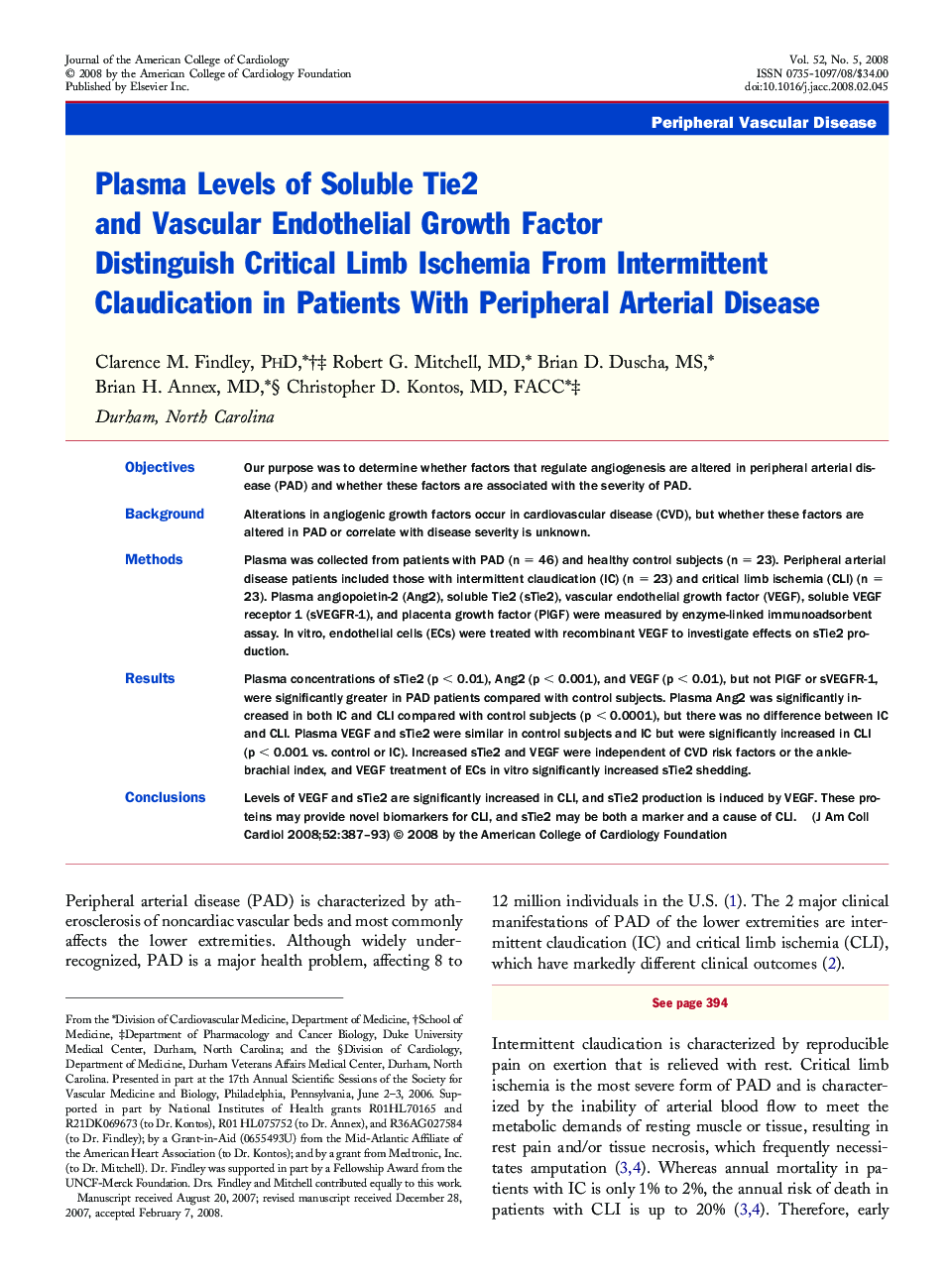| کد مقاله | کد نشریه | سال انتشار | مقاله انگلیسی | نسخه تمام متن |
|---|---|---|---|---|
| 2949969 | 1577411 | 2008 | 7 صفحه PDF | دانلود رایگان |

ObjectivesOur purpose was to determine whether factors that regulate angiogenesis are altered in peripheral arterial disease (PAD) and whether these factors are associated with the severity of PAD.BackgroundAlterations in angiogenic growth factors occur in cardiovascular disease (CVD), but whether these factors are altered in PAD or correlate with disease severity is unknown.MethodsPlasma was collected from patients with PAD (n = 46) and healthy control subjects (n = 23). Peripheral arterial disease patients included those with intermittent claudication (IC) (n = 23) and critical limb ischemia (CLI) (n = 23). Plasma angiopoietin-2 (Ang2), soluble Tie2 (sTie2), vascular endothelial growth factor (VEGF), soluble VEGF receptor 1 (sVEGFR-1), and placenta growth factor (PlGF) were measured by enzyme-linked immunoadsorbent assay. In vitro, endothelial cells (ECs) were treated with recombinant VEGF to investigate effects on sTie2 production.ResultsPlasma concentrations of sTie2 (p < 0.01), Ang2 (p < 0.001), and VEGF (p < 0.01), but not PlGF or sVEGFR-1, were significantly greater in PAD patients compared with control subjects. Plasma Ang2 was significantly increased in both IC and CLI compared with control subjects (p < 0.0001), but there was no difference between IC and CLI. Plasma VEGF and sTie2 were similar in control subjects and IC but were significantly increased in CLI (p < 0.001 vs. control or IC). Increased sTie2 and VEGF were independent of CVD risk factors or the ankle-brachial index, and VEGF treatment of ECs in vitro significantly increased sTie2 shedding.ConclusionsLevels of VEGF and sTie2 are significantly increased in CLI, and sTie2 production is induced by VEGF. These proteins may provide novel biomarkers for CLI, and sTie2 may be both a marker and a cause of CLI.
Journal: Journal of the American College of Cardiology - Volume 52, Issue 5, 29 July 2008, Pages 387–393